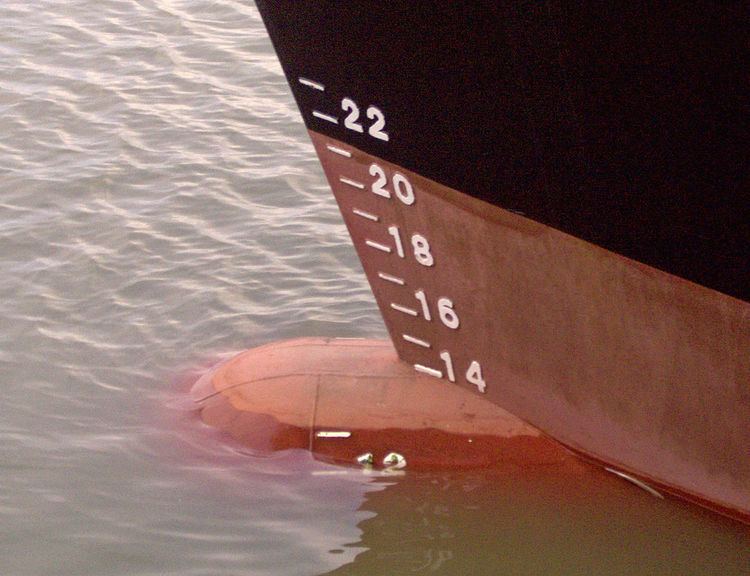 | ||
The displacement or displacement tonnage of a ship is the ship's weight. The name reflects the fact that it is measured indirectly, by first calculating the volume of water displaced by the ship, and then calculating the weight of that water. By Archimedes' principle, this is also the weight of the ship.
Contents
- Calculation
- Definitions
- Loaded displacement
- Light displacement
- Normal displacement
- Standard displacement
- References
Displacement should not be confused with other measurements of volume or capacity typically used for commercial vessels such as net tonnage, gross tonnage, or deadweight tonnage.
Calculation
The process of determining a vessel's displacement begins with measuring its draft This is accomplished by means of its "draft marks" (or "load lines"). A merchant vessel has three matching sets: one mark each on the port and starboard sides forward, midships, and astern. These marks allow a ship's displacement to be determined to an accuracy of 0.5%.
The draft observed at each set of marks is averaged to find a mean draft. The ship's hydrostatic tables show the corresponding volume displaced.
To calculate the weight of the displaced water, it is necessary to know its density. Seawater (1025 kg/m³) is more dense than fresh water (1000 kg/m³); so a ship will ride higher in salt water than in fresh. The density of water also varies with temperature.
Devices akin to slide rules have been available since the 1950s to aid in these calculations. It is done today with computers.
Displacement is usually measured in units of tonnes or long tons.
Definitions
There are terms for the displacement of a vessel under specified conditions:
